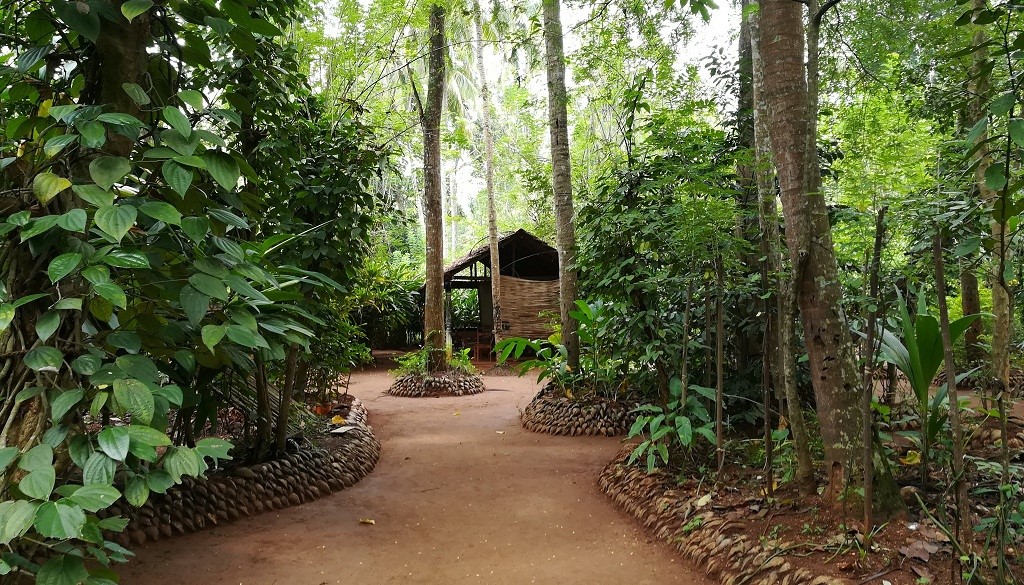Spice Gardens of Sri Lanka
Introduction
Sri Lanka’s fertile soil and tropical climate have long made it one of the world’s great spice islands. Renowned for its cinnamon, cardamom, nutmeg, and black pepper, the island’s spice gardens—particularly those around Matale and Kandy—offer visitors a fragrant and educational journey through centuries of cultivation and trade. A walk through these gardens reveals not just the origin of these aromatic treasures but the stories, traditions, and craftsmanship that sustain them.
The Journey – From Seed to Spice
A visit to a Sri Lankan spice garden begins with a guided walk through lush plantations where rows of spice trees and shrubs thrive beneath the tropical sun. Local experts introduce visitors to the life cycle of each spice, explaining how cinnamon bark is carefully peeled, how cardamom pods are hand-picked, and how nutmeg and pepper are processed.
Along the way, the air is filled with rich, warm aromas — cinnamon’s sweetness mingles with the earthy scent of cloves and the sharp note of pepper vines climbing nearby trees. Visitors often have the chance to touch, smell, and even taste the spices straight from their natural source, making the experience delightfully sensory.
More Than Flavor – The Cultural and Medicinal Story
Spices in Sri Lanka are more than culinary ingredients; they are woven into Ayurvedic medicine, local cuisine, and cultural rituals. Guides often demonstrate traditional uses, such as making herbal oils, teas, and natural balms believed to aid in digestion, skincare, and wellness.
The tour also highlights the island’s historical role in the global spice trade, which once drew traders from Arabia, Europe, and Asia to its shores. These interactions shaped Sri Lanka’s economy and culture, turning it into a crossroads of flavors and ideas that continues to thrive today.
🌿 Suggested Experience Plan
Morning Visit – 1.5 to 2 Hours
Arrive at a spice garden in Matale or Kandy. Enjoy a guided walk through cinnamon, pepper, and cardamom plantations.
Cultural Demonstration
Learn about traditional spice processing, Ayurvedic applications, and sample herbal drinks or spice-infused tea.
Shop & Relax
Browse natural products such as oils, teas, and authentic spice blends before returning to your route toward Kandy or Dambulla.
💶 Pricing & Packages
| Experience Type | Duration | Price / Person (€) | Inclusions |
|---|---|---|---|
| Guided Spice Garden Tour | 2 Hours | €20 | Guided tour, herbal tea, demonstrations |
| Spice & Cooking Experience | Half Day | €60 | Tour, cooking class, lunch, spice gift set |
| Cultural & Ayurvedic Combo | Half Day | €85 | Spice garden tour, Ayurveda demo, massage, lunch |
🌸 Practical Tips
Best Season: Year-round; mornings are cooler for walking tours.
Location: Mainly between Kandy and Dambulla (Matale district).
What to Bring: Comfortable shoes, hat, insect repellent, and water.
Shopping Tip: Look for gardens with transparent pricing and certified organic products.
Language: Most guides speak English, with multilingual tours often available.
Conclusion
A visit to Sri Lanka’s spice gardens is a journey into the island’s fragrant soul — where nature, culture, and tradition meet. Beyond the beauty of the plants themselves lies a story of centuries-old knowledge and a legacy that has connected Sri Lanka to the world through the simple magic of spice.


.jpg)
.jpg)
.jpg)
.jpg)
.jpg)
.jpg)
.jpg)
.jpg)
.jpg)
.webp)
.jpg)